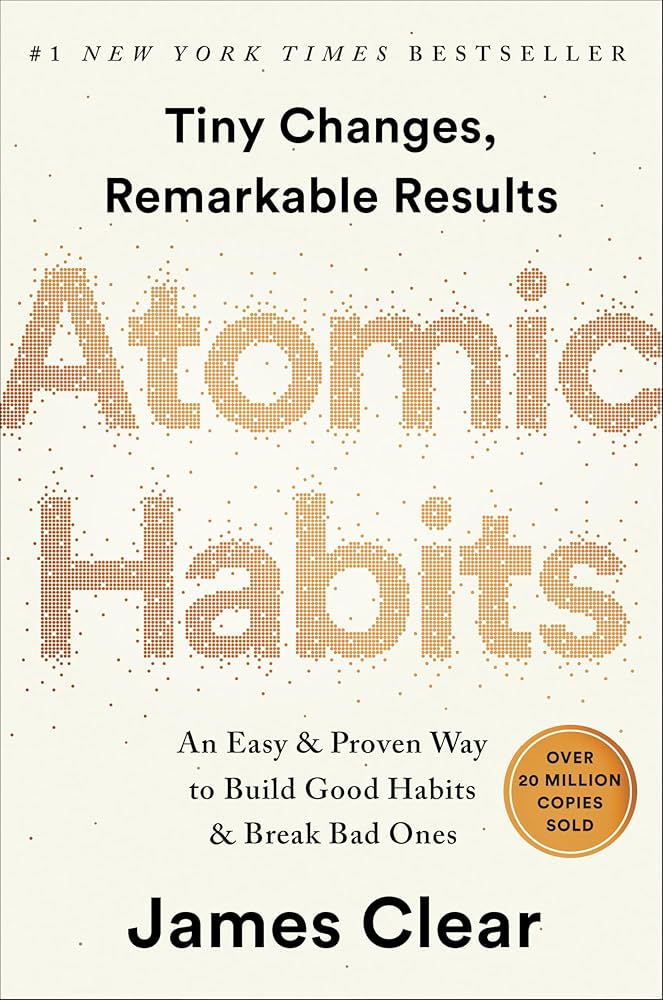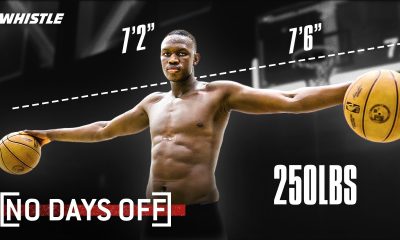Sports
Consistency for the Win; Building Sustainable Cycling Fitness


By Sarah Kaufmann — In these early season months, as we look to the training and racing ahead, everything seems possible. It’s easy to get excited by intense workouts, smashing group rides, and big, flashy efforts. But the key to sustainable, long-term progress is more mundane – and sometimes more challenging. It’s about being consistent day in and day out, doing the work as your body tolerates and having the objectivity to step back when it doesn’t. It takes patience.
Why Consistency Matters
Consistent training builds your fitness over time. Each ride – whether an endurance session or a structured workout, adds up. You build a deep aerobic base. Regular training creates changes in the body across a spectrum of cardiovascular, muscular, metabolic, respiratory, hormonal, and neuromuscular systems that give you the foundation to develop peak fitness. This aerobic foundation lays the groundwork for all the training you do. Think of it as the base of a pyramid – the larger the base, the higher the peak. As your aerobic conditioning improves with consistency, your ability to recover and absorb hard sessions also improves. So, the more you do, the more you can do.
The Importance of a Strong Aerobic Base for High-Intensity Training
High intensity, flashy workouts are exciting. The programming usually looks interesting and pulls our attention. But before you can fully benefit from these sessions, it is essential to have a deep aerobic foundation in place. Even the most exciting workouts will under deliver without the base to adapt from the load. A strong base ensures you can tolerate and recover from these sessions.

A Realistic Timeline for Season-Long Goal Setting
Building a well-rounded training program means there is a time and place for the high-intensity workouts within a context of consistent work and proper recovery. Keep in mind that developing deep aerobic fitness takes years, so this timeline is meant only as a barebones guide for single event prep:
- Base Phase (12-16 weeks): Focus on creating a base with long rides, as conditions allow (this period of training is often done during the winter). Intervals in the tempo/ sweet spot/ threshold ranges also fortify these long rides and can fill in when volume isn’t achievable.
- Build Phase (6-8 weeks): Moving toward more structured intensity with focused threshold and VO2 Max work. Volume likely dips to accommodate the additional intensity. More strategic recovery sessions are needed to ensure adaptation from the higher intensity.
- Peak Phase (4-6 weeks): Prepare for your goal event by fine-tuning your fitness. Volume is reduced and the structured workouts are tailored to the specific demands of your event. This is when those spicy, exciting workouts have their place!
- Transition Phase (Post-Event): After your goal event, build in time to recover and reflect. This phase can often bring some feelings of sadness. The denouement may leave you feeling empty. Preparing for these emotions can make the process easier. Use this period for open riding, limited structure, and cross-training, setting the stage for the next training cycle.
Practical Strategies to Maintain Consistency
- Plan Your Training: Work with a coach to strategically plan the timing and intensity of training sessions to optimize within your normal life schedule and commitments. This partnership will manage training through periods of fatigue and stress.
- Reflect on short-term goals: In addition to your seasonal objectives, celebrate the successes that come within training – new FTPs or peak power metrics, nailing a week of training, consistency with sleep, optimal fueling, etc.
- Monitor Your Recovery: Be aware of how your body feels after each workout and adjust your training load accordingly. Be willing to modify or cut workouts if you are under recovered, to complete subsequent sessions with precision.
Conclusion
Developing deep, resilient fitness is about steady, consistent work over time. Realistic, focused goals, and a structured training plan give you the foundation for success and ongoing progress throughout the season.
(Visited 23 times, 2 visits today)
Sports
Pitt volleyball sets the tone early, sweeping UMBC to launch its NCAA tournament push
Sports
#11 Volleyball Heads to Regional Semi’s After Beating UNI

Creighton never trailed in the first set, turning an 8-7 lead into a 13-8 advantage. CU continued to pull away, taking an 18-11 lead as Abbey Hayes provided an early boost with four kills. CU poured it on, taking the first set 25-18 on Hayes’ fifth kill. Creighton hit .441 en route to winning the first set for its 22nd straight match. BIG EAST Setter of the Year Annalea Maeder dished a dozen assists and added four digs, two kills and added a block.
UNI didn’t waste any time fighting back, taking a 9-4 lead to open the second set. Creighton’s slow comeback was aided by five UNI serving errors in the set. CU drew within one point on eight occasions before finally tying the score on an ace by Hayes to make it 20-20. CU also tied it at 21-all, but both times sent their next serve into the net as UNI regained the lead. The Panthers went up 23-21 and 24-22 on Cassidy Hartman’s 10th and 11th kills, and won it 25-23 after Lily Dykstra’s kill withstood a CU challenge to even the match. Dykstra had eight kills and Hartman six in the second frame to pace a Panther attack that had 18 kills in 40 swings.
The third set featured the first lead change of the match when UNI took a 4-3 lead, part of a 12-5 run that saw CU call both of its timeouts and the Panthers take a 14-8 lead. CU used the right arm of All-American Ava Martin to take a 16-15 lead after four straight kills from the BIG EAST Player of the Year. The set would feature nine ties and four lead changes before CU ultimately prevailed, 25-22. Back-to-back blocks by Eloise Brandewie and Jaya Johnson gave CU a 24-21 lead and a Panther service error handed the Jays a 2-1 lead.
The fourth set saw Creighton race out to an early 3-0 lead and did not release it, taking the match 25-21. While Creighton did not trail in the decisive fourth stanza, Northern Iowa pulled even and 5-5 with four of five points. Holding an 11-9 edge, the Bluejays seemed to take complete control with six straight points by forcing the Panthers into four attack errors during the run. Down 17-9 UNI responded with eight of the next nine points to make it a one-point contest at 18-17. Moments later the Bluejays put things away with four straight points, courtesy of consecutive blocks, an ace from Nora Wurtz and a kill from Martin.
Four Bluejays closed the match with double-digit kills, led by 16 from Martin. Joining the double-digit party were Hayes (12), Johnson (11) and Kiara Reinhardt (10). Maeder guided the Creighton offense with 47 assists and 14 digs, while Sydney Breissinger owned a match-best 19 digs and also served up a pair of aces. CU had 55 kills, 66 digs, 13 blocks and five aces on .265 hitting.
Northern Iowa got a match-high 21 kills from Hartman, to go along with 15 kills from Dykstra and 10 from Isabelle Elliott. The guiding force for the Panthers brought a familiar name back to D.J. Sokol Arena as Reese Booth (the daughter of former Bluejay head coach Kirsten Bernthal Booth) finished with a double-double of 22 assists and 16 digs. UNI had 62 kills, 70 digs, five blocks and three aces on .241 hitting. The unbeaten regular-season and tournament champion out of the Missouri Valley Conference, Northern Iowa finishes its season with a 26-6 record.
With the win, Creighton will play Arizona State in the Regional Semifinal. A date, time, location and broadcast plans will be announced later this weekend.
NOTES: Creighton has played Northern Iowa more times (60) than any other foe … Kiara Reinhardt set the D.J. Sokol Arena career blocks record with her 250th career rejection late in the first set … Reinhardt also extended her career records by making her 65th start and playing in her 69th career match at D.J. Sokol Arena … Ava Martin set the D.J. Sokol Arena career record for kills with her 781, passing Jaali Winters’ 779. … After winning just four of the first 43 meetings, Creighton has beaten Northern Iowa nine straight meetings and 15 of the last 17 encounters … CU’s 15 wins vs. UNI since 2012 are four more than any other school … Creighton is 12-1 all-time when ranked and facing UNI … CU has won 69 straight matches against unranked teams and 57 straight non-televised contests … Creighton improved to 19-14 all-time in the NCAA Tournament, and 5-7 in the Second Round … Creighton has won 27 or more matches each of the last five years, and nine times in program history … Creighton has won 22 straight matches and snapped UNI’s 22-match win streak, which started after its Sept. 14 loss to CU in Omaha … The late ace in the fourth set for Nora Wurtz gave her 36 this season in D.J. Sokol Arena, a mark that is the single season record … Martin closed the match with a season-high 14 digs, her fourth double-double of the season.
Sports
Head Coach, Volleyball in New York, NY for Fordham University

Details
Posted: 05-Dec-25
Location: New York, New York
Type: Full-time
Categories:
Coaching
Coaching – Volleyball
Sector:
Collegiate Sports
Preferred Education:
4 Year Degree
Head Coach, Volleyball
Women’s Volleyball, Rose Hill
Fordham University
Fordham University has an excellent reputation as a dynamic institution located in New York City. Founded in 1841, Fordham enrolls more than 16,000 undergraduate and graduate students in its 9 Colleges and Schools.
•Fordham University offers a comprehensive and competitive benefits package to its employees, which includes medical, dental, vision, life, and disability insurance.
•We offer tuition remission for employees and their dependents.
•A generous employer match towards a 403(b) retirement plan.
•As a tax-exempt organization under section 501(c)(3) of the Internal Revenue Code (IRC), Fordham is considered a qualifying employer for the Public Service Loan Forgiveness (PSLF) program, a federal program designed to forgive student loan debt for employees of certain public and certain nonprofit employers.
•As part of its work-life balance program, the University provides generous PTO including 15 vacation days, 12 sick days, 2 personal days, 6 summer Fridays, and holidays that include paid time off between Christmas and New year.
•University employees have access to the Employee Assistance Program (EAP). EAP provides no-cost, professional, and confidential services, to help employees and family members address a variety of personal, family, life, and work-related issues.
Position Summary
Reporting to the Director of Intercollegiate Athletics and Recreational Sports, the Head Coach, Volleyball, will provide strategic leadership to all aspects of the women’s volleyball program.
This position requires frequent travel, as well as working evenings and weekends.
Essential Functions
•Leads the organization, planning, teaching, and coaching of all practices and games.
•Implements strategies to improve student-athletes’ skill development through practice and competition.
•Identifies, evaluates, and recruits quality student-athletes in compliance with University, Atlantic 10 Conference, and NCAA policies.
•Tracks academic monitoring of student-athletes through their completion of graduation, working with the Office of Academic Athletic Advising.
•Manages the annual operating budget and respective fundraising gift account.
•Implements fundraising activities to support the operating budget.
•Oversees team travel, equipment, and supplies.
•Represents the University at internal and external marketing, public relations, and fundraising events as required.
•Maintains strong relationships with Admissions, Residential Life, Dining Services, and the Development Office.
•Complies with all NCAA, Atlantic 10 Conference, and University rules and regulations.
Essential Functions Note
This list is not intended to be an exhaustive list.
The University may assign additional related duties as necessary.
Management Responsibilities
Supervises the work of other Fordham employees who are individual contributors. Responsible for hiring, training and developing, managing performance and administering corrective action. Has significant input in compensation decisions.
Additional Functions
Operates University-owned or leased vehicles to transport students, staff, and/or equipment in compliance with federal, state, and local regulations and insurance requirements.
Required Qualifications: Education and Experience
•Bachelor’s degree
•Minimum of three years of volleyball coaching experience.
Required Qualifications: Knowledge and Skills
•High-level organizational skills.
•Demonstrated commitment and motivation to building a successful program.
•Strong interpersonal and communication skills.
•Knowledge and understanding of NCAA rules and regulations.
•Successful candidates should have a knowledge of and commitment to the goals of Jesuit Education.
Preferred Qualifications
•Master’s degree.
•Collegiate head coaching experience.
•Valid driver’s license.
Minimum Starting Salary: $90,000
Maximum Starting Salary: $110,000
Note: Salary is commensurate with qualifications, experience, and skills.
START DATE: ASAP
APPLY HERE: https://careers.fordham.edu/postings/10322
ABOUT FORDHAM
Founded in 1841, Fordham is the Jesuit University of New York, offering an exceptional education distinguished by the Jesuit tradition to more than 16,000 students in its 9 colleges and schools. It has residential campuses in the Bronx and Manhattan, a campus in West Harrison, N.Y., the Louis Calder Center Biological Field Station in Armonk, N.Y., and the London Centre in the United Kingdom.
Fordham University is committed to excellence through diversity and welcomes candidates of all backgrounds.
Fordham is an Equal Opportunity Employer – Veterans/Disabled and other protected categories
https://ncaamarket.ncaa.org/jobs/21884282/head-coach-volleyball
Sports
Mustangs Upset 5-Seed BYU and Advance to NCAA Round 2 Versus USC

Set-by-Set Story
The Mustangs started strong, trading points with BYU early and holding a narrow 15-14 edge at the first-set media timeout. Cal Poly pushed ahead to 19-17 after the break, forcing BYU to burn both timeouts. Then, behind Leluge’s six first-set kills, the Mustangs closed the set on a 6-0 run to win 25-19.
Leluge, Beshear, and Fredrick powered an offense that posted 15 total kills with zero errors in the opener, hitting .357 as a team and siding out at a remarkable 94% rate. The set featured 16 ties, foreshadowing the back-and-forth battle to come.
BYU shrugged off any momentum shift in the second set, racing to a 12-7 lead while hitting .778. Though Cal Poly hit .500 during that stretch, passing struggles near the net allowed the Cougars to pull away and even the match with a 25-17 win.
In the third, BYU used several small runs, including a 4-1 spurt to go up 10-6, to build an early edge. Cal Poly closed within one point twice late, but the Cougars held firm to take the set 25-20 and a 2-1 match lead.
Facing elimination, the Mustangs responded with force in the fourth. Beshear’s powerful attacks and a strengthened net presence from Charlotte Kelly, Annabelle Thalken, Leluge, and Bullis helped Cal Poly seize control midway. Leading from 10-9 onward, they closed out the set 25-20 to force a fifth.
The Mustangs grabbed the tiebreaker early, taking a 4-3 lead and never looking back. A locked-in defense limited BYU to a .000 hitting percentage in the fifth, and Cal Poly surged to a 15-10 victory to seal the upset.
Sports
NCAA Tournament Central: Colorado – Indiana University Athletics

The Hoosiers worked an impressive sweep of Toledo on Thursday (Dec. 4) to open their first NCAA Tournament journey since 2010. Senior outside hitter Candela Alonso-Corcelles led the way with 12 kills while freshman outside hitter Jaidyn Jager recorded a double-double on 11 kills and 10 digs.
Below is a list of notes to know ahead of Friday’s second round match at Wilkinson Hall.
Gameday Info
vs. (5) Colorado (Friday, December 5th, 2025 – 6 p.m. ET)
Live Video: bit.ly/3MkznXp
Live Stats: bit.ly/3MF39WS
Notable
PROGRAM RECORD: The Hoosiers made program history this week in Bloomington after Thursday’s win over Toledo. IU broke a single-season program record for wins (24) in the NCAA era, passing the former mark of 23 from 2010. It will have a chance at a 25-win campaign on Friday against Colorado.
BALANCE ON THE PINS: Indiana is the only Power Four program who has three different players averaging at least 3.22 kills per set this season. On 10 different occasions this year, all three of IU’s pin hitters have gone for 10+ kills each. Senior outside hitter Candela Alonso-Corcelles leads the team with 3.49 kills per set.
POSTSEASON BALL: For just the sixth time in program history, IU is playing in the NCAA Tournament. It’s IU’s first appearance since going to the regional semifinals in 2010. The Hoosiers broke one of the longest postseason droughts (15 years) of any power four program. IU is hosting for just the second time in school history.
ALL-BIG TEN HOOSIERS: IU had three First Team All-Big Ten selections in 2025. Before this year, IU had never even had two players picked to the All-Big Ten First Team in the same year. Senior outside hitter Candela Alonso-Corcelles, senior opposite hitter Avry Tatum and freshman setter Teodora Krickovic all made the team this season.
STRONG AT HOME: The Hoosiers have been fantastic at Wilkinson Hall over the last four years. Dating back to 2022, IU is 39-15 on the home court. For the first time since 1998-2000, IU has won 10-or-more home games in three-straight years. IU hasn’t lost at home to an unranked team since Nov. 12, 2023.
VIC STEPPING UP: When freshman middle blocker Victoria Gray gets the ball, she’s been especially lethal. During the month of November, her game was at a new level. In nine games last month, she hit .416 with 52 kills. Her best game was a career-high 12 kills against Purdue to end the regular season.
BIG TIME AVRY: Senior opposite hitter Avry Tatum has loved the big moments during her IU career. She had 10+ kills in nine of 13 matches against teams that made the NCAA Tournament. In two games last week, Tatum averaged 3.86 kills per set while hitting at a .396 clip.
POWER DUO: IU is 26-8 over the last three years when senior outside hitter Candela Alonso-Corcelles and senior opposite Avry Tatum each record 10 kills in the same match. It last happened in a dominant win at Illinois (Nov. 26). On the season, the Hoosiers are 7-1 in conference play in 2025 when this occurs.
SERVING TOUGH: IU went for 10 aces in Thursday’s win over Toledo. It’s the fifth time this season that the team has gone for double-digit aces. Since November 14th, IU has recorded 52 aces and is averaging 2.26 aces per set in that seven-game stretch. Six different players tallied at least one ace in the first-round victory.
BIG BLOCK GRAY: Freshman middle blocker Victoria Gray became the first freshman to record 100 blocks in a season after her four-block night against Toledo. She’s had 14 different matches with at least four blocks this year. The Hoosiers have also had 14 matches with at least nine blocks as a team this season.
First Round Notes: Indiana 3, Toledo 0
• With a win on Thursday evening, IU set a single-season program record for wins (24) in the NCAA era. The 2010 team won 23 contests but this year’s squad has officially passed that mark. IU will go for its first 25-win season tomorrow night against Colorado.
• Senior outside hitter Candela Alonso-Corcelles moved into ninth in program history in career kills. She recorded 12 in the win over Toledo, passing Katie Pollom (2001-04) in the process. Thursday’s win was the 72nd time she’s recorded double-digit kills in her career.
• Freshman outside hitter Jaidyn Jager recorded the sixth double-double of her young career on Thursday evening. She provided 11 kills and a team-high 10 digs in the victory over Toledo. It’s the seventh time this season she’s recorded at least 10 digs. Jager matched a career high with three aces.
• IU will play Colorado tomorrow night at Wilkinson Hall with a shot at the NCAA regional semifinals. The Hoosiers have made it to the round of 16 just once in program history (2010). These two teams haven’t met since 1993 but will play at 6 p.m. on ESPN+ tomorrow in Bloomington.
• Freshman middle blocker Victoria Gray shared the team lead with four blocks. She became the first IU freshman since Ashley Benson (2007) to record over 100 blocks in a season. Since the beginning of the 25-point rally-scoring era, no freshman has more blocks in a single season than Gray (102.0).
Sports
Campbell Falls to No. 3 Texas A&M in 2025 NCAA Volleyball Championship Opening Round
Campbell Falls to No. 3 Texas A&M in 2025 NCAA Volleyball Championship Opening Round
COLLEGE STATION, Texas – Despite a valiant defensive effort, the Campbell volleyball team saw its season come to an end after falling to No. 3 Texas A&M at the 2025 NCAA Volleyball Championship in straight sets (20-25, 10-25, 13-25) inside Reed Arena on Friday evening.
The Camels finished the season with a 23-7 record. Hannah Pattie and Bella Illig battled on the back line, each reaching double figures in digs with 11 and 10 apiece, respectively. Abbie Tuyo notched a team-best nine kills on Friday.
The CAA Champions kept pace with the Aggies (24-4) in the opening set, going point-for-point before taking an early 7-6 lead on a tandem block from Tuyo and Aley Clent. Texas A&M surged shortly after with a 9-2 run halted by a slam by Campbell’s Gwen Wolkow. The Camels did not go away quietly with an 8-1 stretch of their own, starting with a kill from Maja Daca and finishing with a Clent and Tuyo stuff on A&M’s Kyndal Stowers at the net to pull within three, 23-20. The Aggies went on to capture the first set two points later, 25-20.
Campbell’s Daca helped her team to a 3-3 tie to start the second frame after earning a kill and painting the end line for a service ace. The Aggies pulled away after seeing Logan Lednicky register four kills and a solo block on the team’s 10-1 run to close out the set, 25-10 win.
The Camels’ Illig fought off heavy swings from the Aggies’ attackers all evening, but her impressive defensive abilities were on full display to start the third set. The graduate libero saved a floater from hitting the floor and dug out two more attacks before setting up Tuyo for the kill, tying the score at two early in the third set. Texas A&M proved to be too much and secured a 25-13 win in set three.
Follow #CAAVB on Facebook, Twitter, and Instagram to get up-to-date information and learn more about CAA member institutions and their volleyball programs.
-

 Rec Sports2 weeks ago
Rec Sports2 weeks agoFirst Tee Winter Registration is open
-

 Rec Sports1 week ago
Rec Sports1 week agoFargo girl, 13, dies after collapsing during school basketball game – Grand Forks Herald
-

 Motorsports2 weeks ago
Motorsports2 weeks agoCPG Brands Like Allegra Are Betting on F1 for the First Time
-

 Sports2 weeks ago
Sports2 weeks agoVolleyball Recaps – November 18
-

 Motorsports2 weeks ago
Motorsports2 weeks agoF1 Las Vegas: Verstappen win, Norris and Piastri DQ tighten 2025 title fight
-

 Sports2 weeks ago
Sports2 weeks agoTwo Pro Volleyball Leagues Serve Up Plans for Minnesota Teams
-

 Sports2 weeks ago
Sports2 weeks agoSycamores unveil 2026 track and field schedule
-

 Sports1 week ago
Sports1 week agoUtah State Announces 2025-26 Indoor Track & Field Schedule
-

 NIL5 days ago
NIL5 days agoBowl Projections: ESPN predicts 12-team College Football Playoff bracket, full bowl slate after Week 14
-

 Sports1 week ago
Sports1 week agoTexas volleyball vs Kentucky game score: Live SEC tournament updates























































